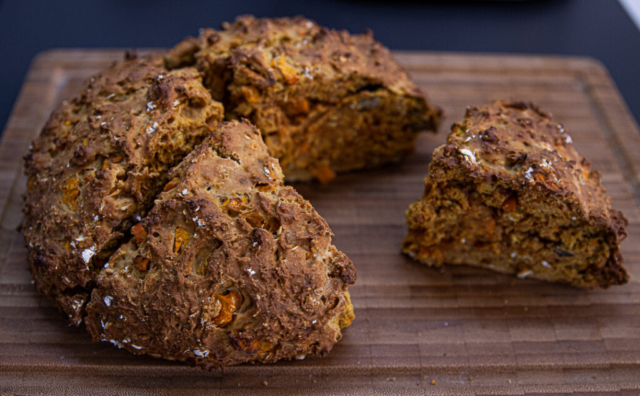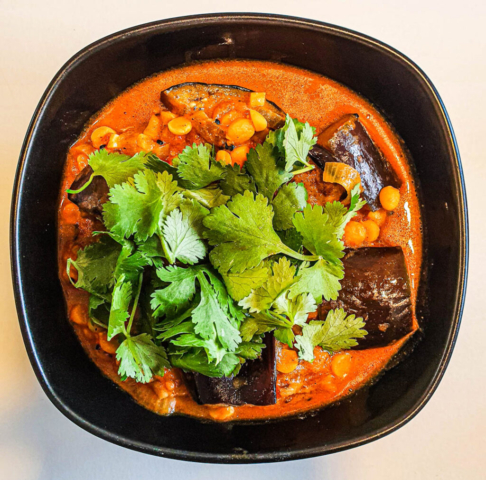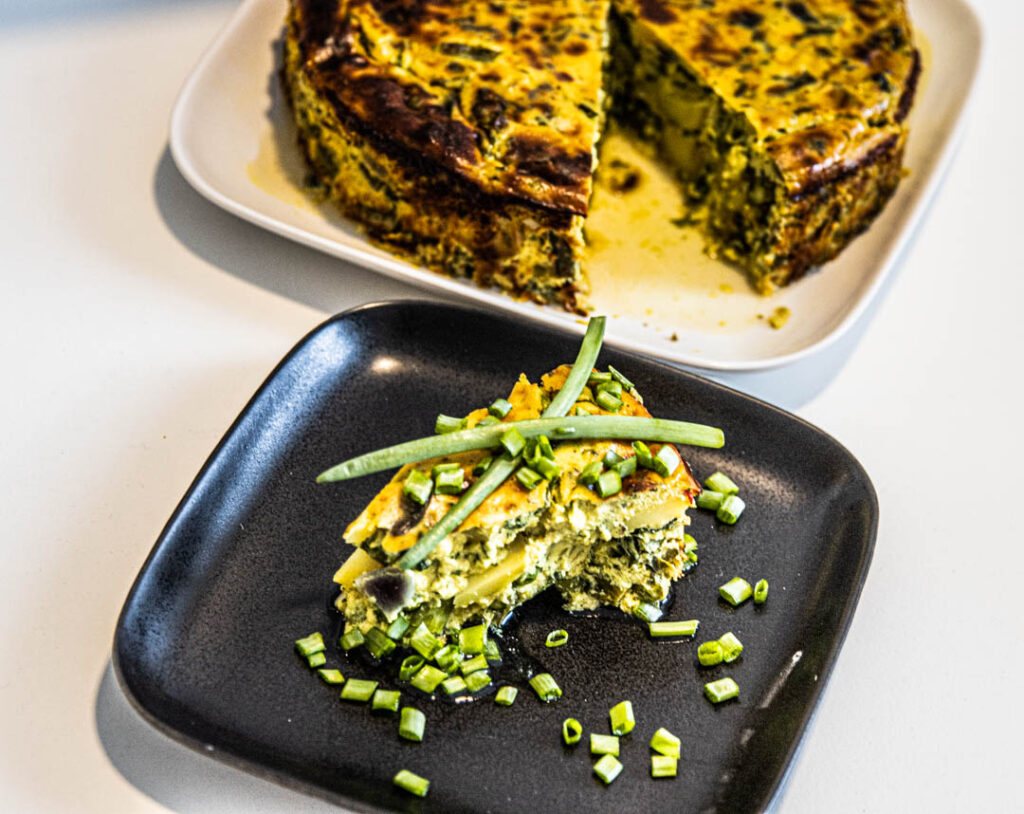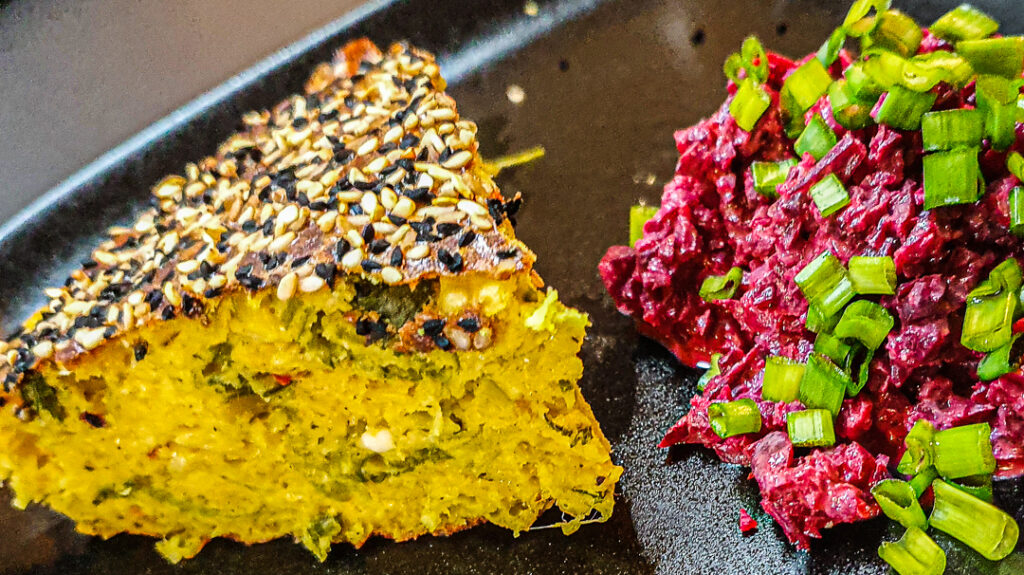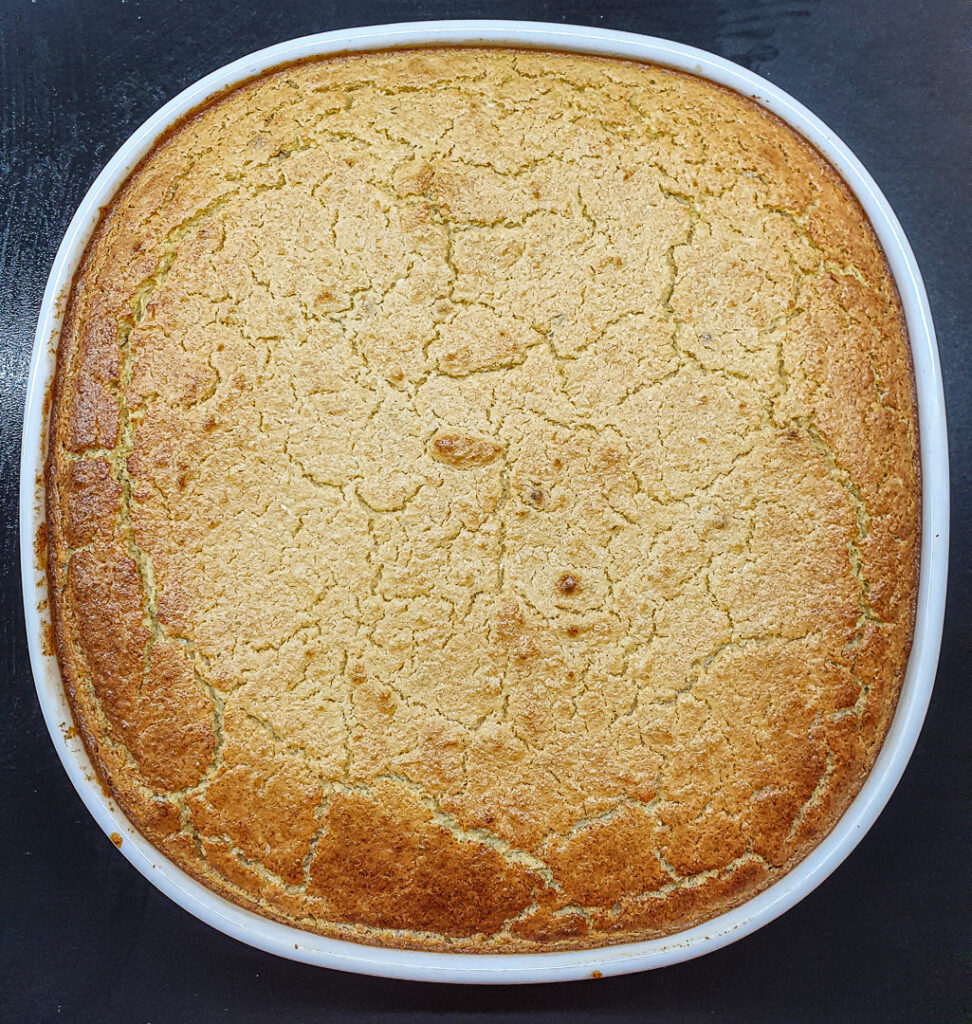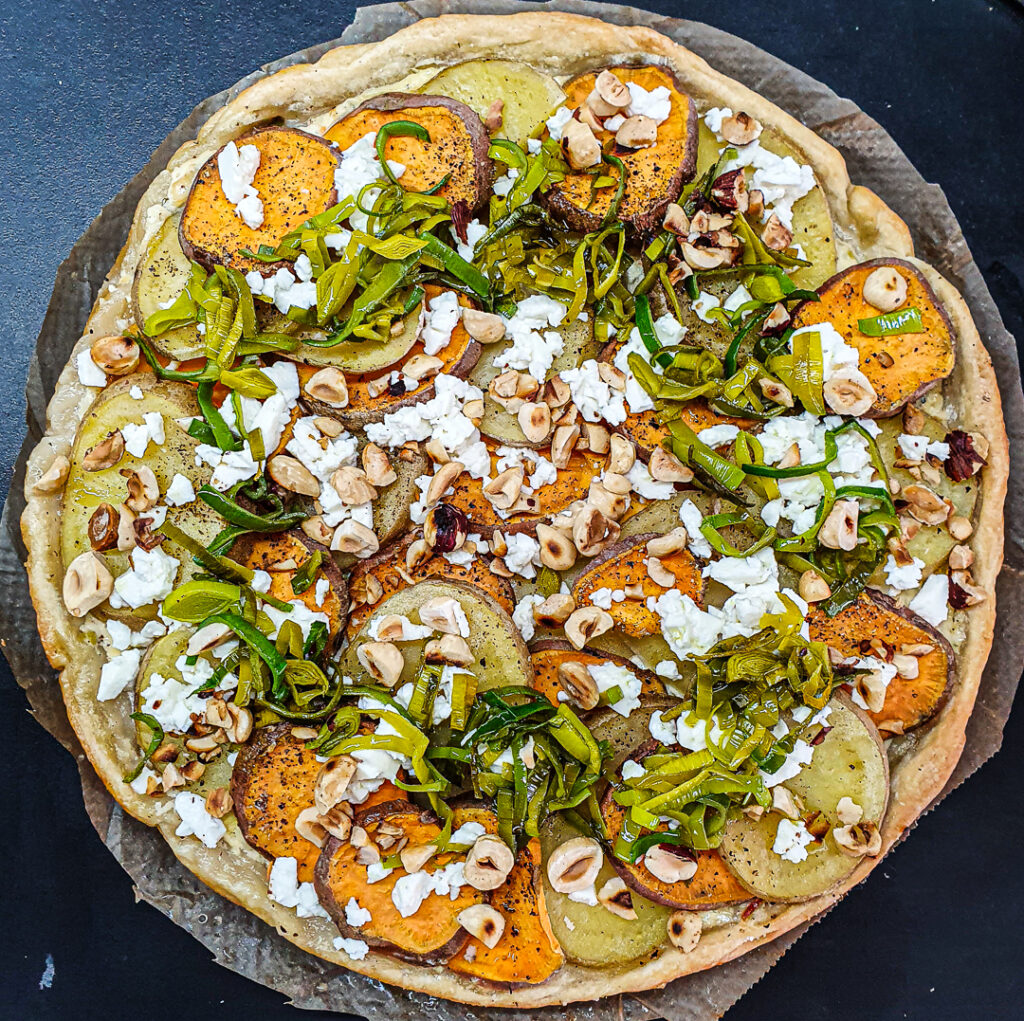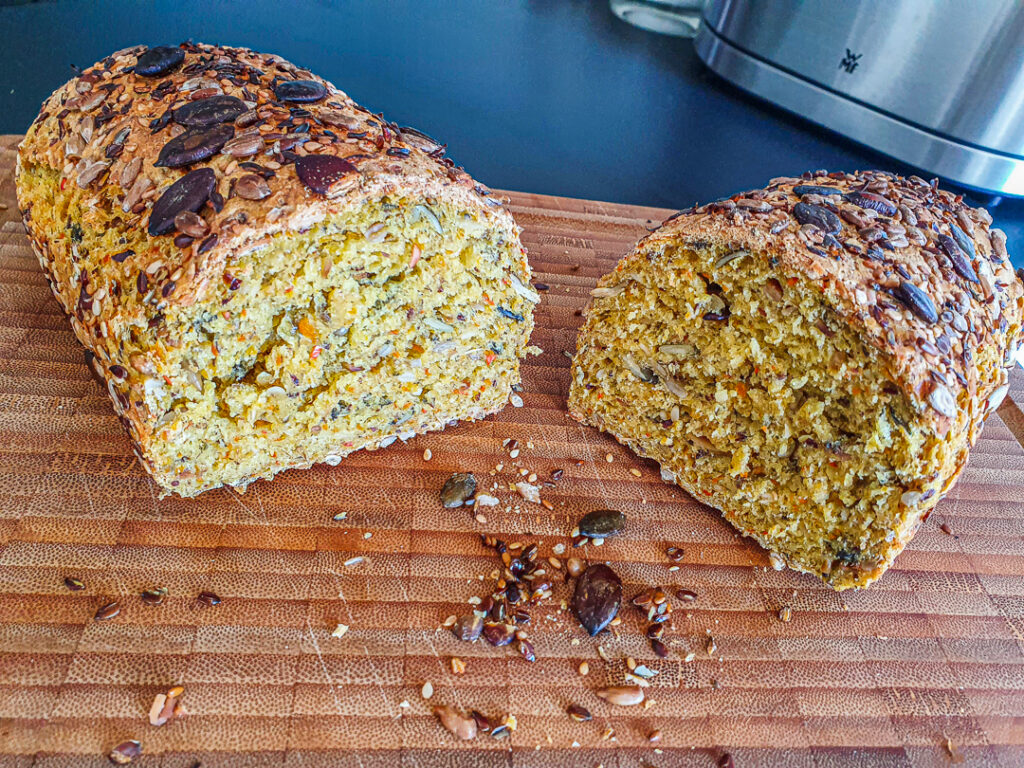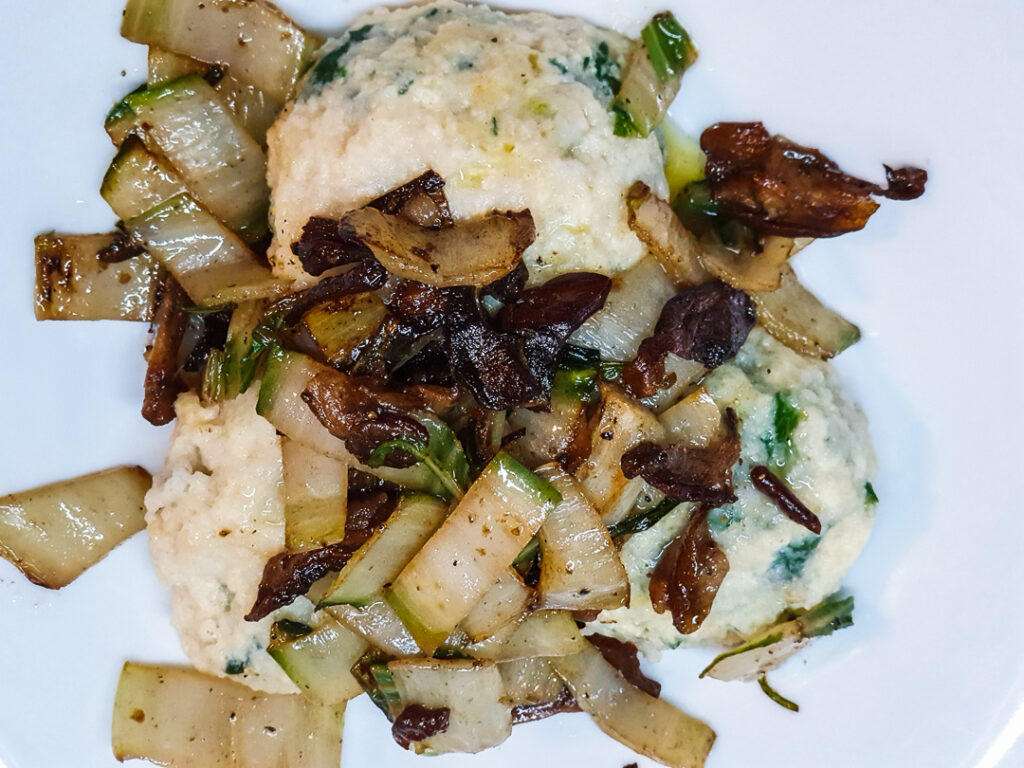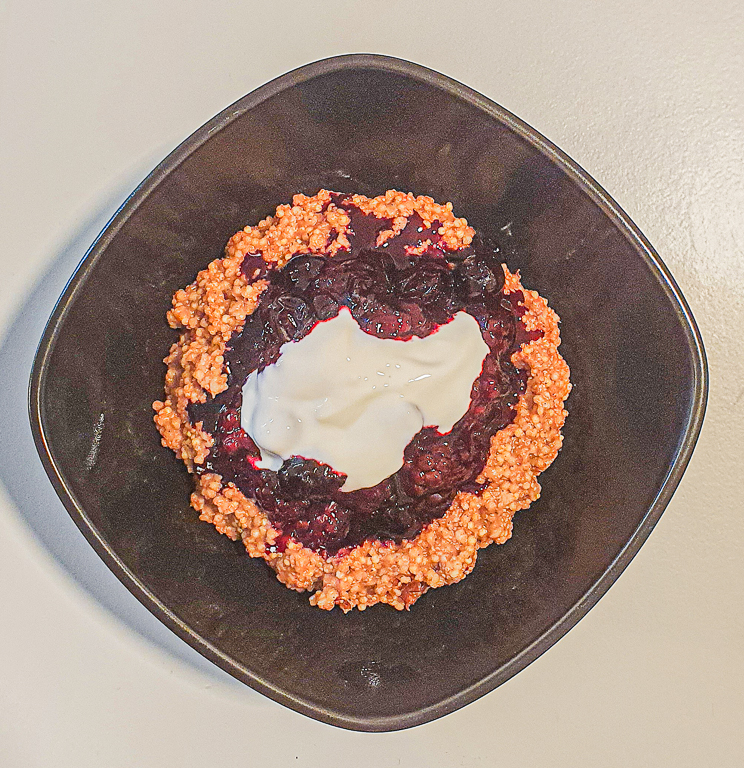This is a slightly modified version of this bread from Olive Magazine.
- 200 g plain flour
- 200 g gram flour
- 100 h porridge oats
- 1 heaped tsp turmeric and a healthy dose of freshly ground pepper
- 1 tsp salt
- 2 tsp bicarbonate of soda (“Natron”)
- 200 g carrots, peeled and grated
- a handful of walnuts, slightly crushed between the fingers
- 300 ml yoghurt (the recipe calls for low-fat Greek yoghurt, but I normally only have 3,6 percent goat yoghurt in the house
- 1 dl milk (the recipe calls for semi-skimmed milk – I used oatmilk but I am sure any kind of milk or plant-based milk will do
Heat oven to 230 C (fan 210).
Mix the flours, oats, salt, turmeric, pepper, and bicarbonate of soda well and stir in the carrot, walnuts and yoghurt.
Then mix in enough of the milk to make a soft, quite sticky dough, and form a flattish ball. Put this on a baking sheet, slash the top and bake for 30 minutes or until risen and baked through.
The bread should sound hollow when you tap it.

